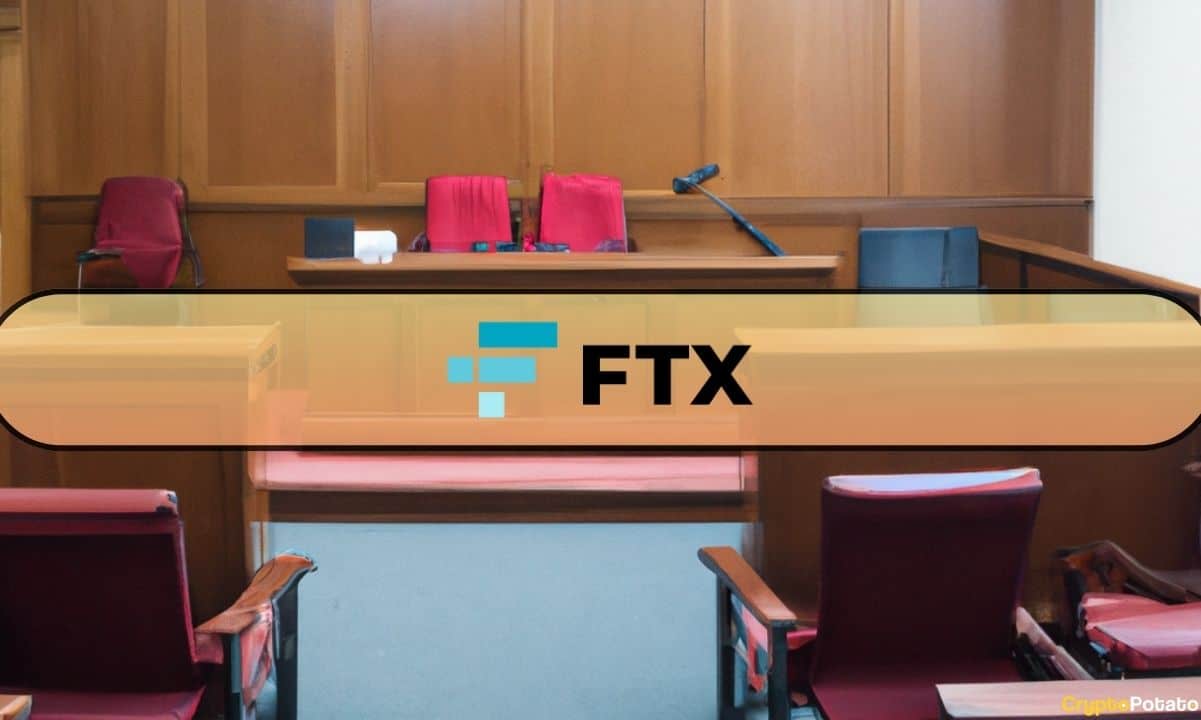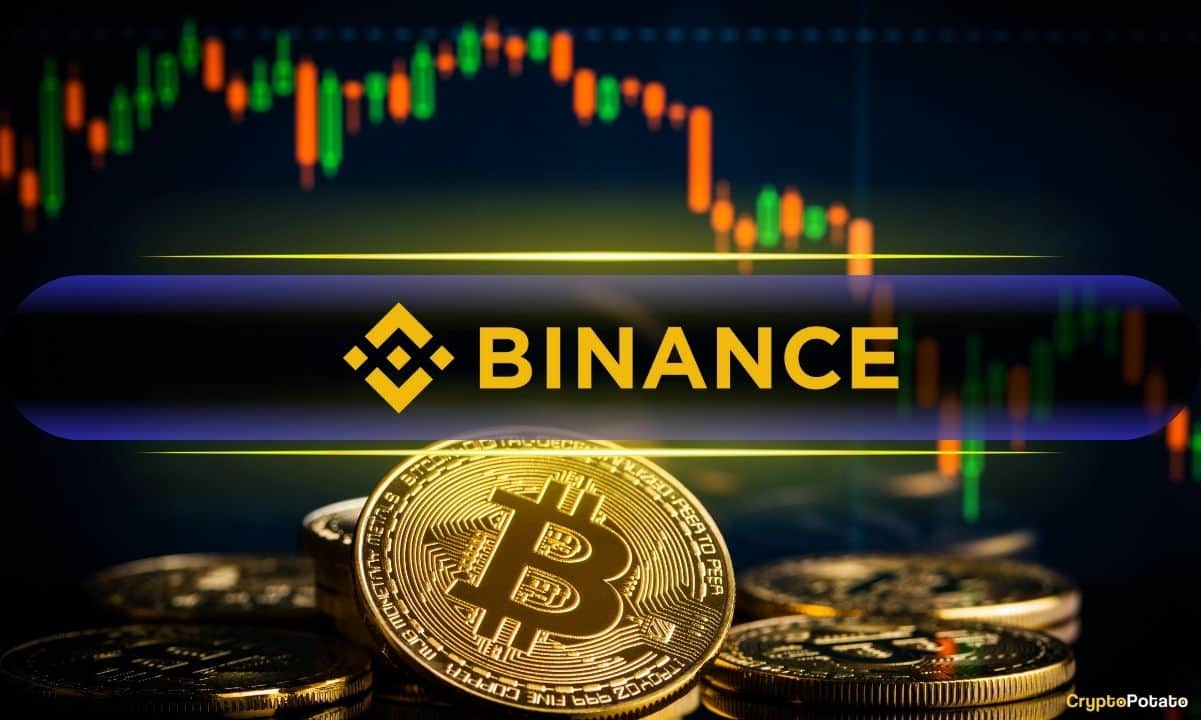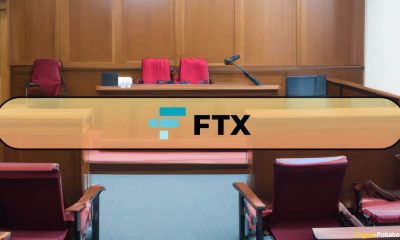Cryptocurrency
4 ‘Rich Dad Poor Dad’ Quotes for Bitcoin Investors in 2025

In an Apr. 20 post on X, Kiyosaki wrote, “BITCOIN is $84k today. Strongly believe Bitcoin will reach $180k to $200k in 2025.” Five days later, BTC was trading above $93,600.
BITCOIN is $84k today. Strongly believe Bitcoin will reach $180k to $200k in 2025.
What do you think?
— Robert Kiyosaki (@theRealKiyosaki) April 20, 2025
Earlier, on Apr. 18, the “Rich Dad, Poor Dad” author predicted that Bitcoin’s price will eventually skyrocket to $1 million. His related price predictions spelled doom for the dollar’s buying power:
“I strongly believe, by 2035, that one Bitcoin will be over $ 1 million dollars. Gold will be $30k and silver $3,000 a coin.”
“People who heeded my warnings are doing well today. I am concerned for those who did not,” wrote Kiyosaki in the long-form X update. He warned, “This coming Great Depression will cause millions to be poor… and a few who take action may enjoy great wealth and freedom.”
Dire Economic Straits and Enterprising Bitcoin Investors
Kiyosaki isn’t a contrarian voice to warn of a difficult economic downturn ahead. Federal Reserve Chair Jerome Powell warned in April that the US could soon be mired in a stagflationary period of low growth and rising prices.
Kiyosaki is also not the only financial expert who has predicted that Bitcoin’s price will reach $1 million.
In fact, his timeframe for it is conservative compared to Twitter founder Jack Dorsey’s, who predicted a $1 million BTC price by 2030 in May last year.
But, Kiyosaki is firmly in the high-conviction column for Bitcoin’s potential upside prices five and ten years from now. Here’s how some of his classic investment advice applies to BTC.
1. Kiyosaki on Income vs. Wealth
“The rich focus on their asset columns while everyone else focuses on their income statements.”
In his New York Times bestseller on personal finances and building wealth, Kiyosaki makes an important distinction between wealth and income. He points out that income takes most of your time and effort to sustain, but that wealth sustains your income automatically.
This means even high-income individuals can struggle under equally big spending routines and borrow money at substantial interest rates to maintain a certain way of living.
Thus, not long ago, PYMNTS and the Lending Club found in a survey that about 50% of Americans with six-figure incomes may be living paycheck to paycheck.
In April, the Philadelphia Federal Reserve said that late credit card payments and minimum payments are at the highest level since 2012.
Individuals and households with these spending routines are swimming in the opposite direction of the macro financial currents of the past ten years, as the voracious Bitcoin hoarders.
Managing finances this way is bargaining a harder tomorrow for an easier today. But the way frugal and thrifty saver/investors budget is bargaining a harder today for an easier tomorrow.
2. ‘Rich Dad, Poor Dad’ on Investing
“You must know the difference between an asset and a liability and buy assets. An asset puts money in your pocket. A liability takes money out of your pocket.”
Kiyosaki also discerns between assets and liabilities in an individual or household’s financial balance book. In his opinion, houses should not be considered assets because they cost money to maintain and finance.
During the US housing market boom that preceded the 2008 financial crisis and the great recession, conventional financial wisdom said to buy a house because its value would continue going up forever.
But starting in 2007, a mass wave of defaults and foreclosures crashed house prices. Bitcoin launched soon after that to create a space in the financial ecosystem based on settlement instead of lending.
Instead of paying future obligations to consume more today, as with housing loans, Bitcoin is like collecting future rewards by consuming more efficiently today and buying BTC with the savings.
If it continues to appreciate in value due to its scarcity and global popular demand, it will remain an asset rather than a liability like a mortgage, credit card balance, or college loan.
3. Bitcoin and Financial Literacy
“Illiteracy, both in words and numbers, is the foundation of financial struggle.”
Another key point of Kiyosaki’s message in “Rich Dad, Poor Dad” was that families, schools, and the government have mostly failed to educate Americans about the basics of finance and investing.
He says that many people don’t really understand the disadvantages of borrowing money and paying interest instead of saving money and collecting returns on investments.
That kind of bad financial math doesn’t just keep many Americans out of investing in Bitcoin and cryptocurrencies. It keeps them from saving any money using any method.
Last December, a Schroders US retirement survey found that half of Gen Xers, Americans aged 44 to 59, have not done any retirement planning at all.
In the cryptocurrency social media community, users like to post, “Do your own research.” Bitcoin aficionados especially like to post, “Do the math.”
One benefit of learning about investing and doing financial math is that it can help to counteract the often more convincing pull of immediate gratification and result in healthier financial behavior.
4. Household Finance, Consumer Debt, and Bitcoin
“A person can be highly educated, professionally successful, and financially illiterate. Many financial problems are caused by trying to keep up with the Joneses.”
In fact, the main thrust of Kiyosaki’s book is that he found it remarkable in the course of his life’s experiences, how blatantly neglected financial and investment thinking is among even people of high intelligence, career success, and social status.
The basics of accounting, budgeting, investing, and tax law are not learned or practiced by a shocking swath of the populace, he contends, despite the importance of these modalities to beneficial outcomes that people desire.
If most people cannot be bothered to devote two to three hours a week to learning and eventually mastering these reliably rewarding and basic areas of competency, then it’s no mystery why Bitcoin remains inaccessible to many because it sits well enough beyond their threshold for healthy curiosity.
Binance Free $600 (CryptoPotato Exclusive): Use this link to register a new account and receive $600 exclusive welcome offer on Binance (full details).
LIMITED OFFER for CryptoPotato readers at Bybit: Use this link to register and open a $500 FREE position on any coin!
Cryptocurrency
FTX Wants to Block Claims from 49 Countries, Including China: Users Rage

Bankrupt crypto exchange FTX is asking the court to greenlight a plan that could potentially deny billions in creditor repayments to users in 49 countries where crypto faces legal restrictions.
This could disproportionately impact Chinese users, who reportedly represent 82% of the affected claim value.
Navigating Legal Minefields in Restricted Jurisdictions
The FTX proposal, detailed in a July 2 court filing, is seeking authorization to designate 49 countries, including China, Russia, Afghanistan, and Ukraine, as “Potentially Restricted Jurisdictions.”
While claims from these regions will be automatically treated as “disputed,” the FTX Trust will first seek legal opinions for each jurisdiction, and in cases where distribution is deemed legally permissible, payouts will proceed.
However, where legal advice indicates distributing funds would violate local laws, the Trust will issue a formal notice to affected creditors. These users will then have a 45-day window to file a formal objection, including submitting it to a U.S. court.
According to the document, if a jurisdiction is ultimately deemed “restricted” and a claimant remains a resident there when repayments are processed, their funds and any associated interest “shall be immediately forfeited and revert to the FTX Recovery Trust.”
The submission has triggered significant backlash from affected users. While the FTX Recovery Trust is positioning it as a legal compliance issue, others argue it raises serious ethical questions.
“FTX accepted users from China when things were fine,” wrote one X user. “Now denying their claims entirely because of ‘restricted jurisdiction’ feels unfair.”
He described creditors from the beleaguered countries as “victims” who still deserved to be repaid.
Another Chinese claimant, going by the username “Will,” also argued forcefully against the rationale:
“While mainland China does not support cryptocurrency trading, residents… are allowed to hold cryptocurrencies… The claims process uses USD for settlement… they are allowed to hold USD overseas. So why isn’t wire transfer settlement supported?”
Meanwhile, others expressed despair, with one user asking, “Is there anything that could be done? Or they just steal all of the money?” FTX creditor advocate Sunil suggested that selling or transferring the claim to someone in an allowed jurisdiction might be a potential workaround.
Ongoing Repayments
While the controversy rages on, other creditors have been making progress with their payments. As per a July 1 update, those with claims under $50,000 have already received 120% payouts, while larger claimants received 72.5% in May. The remaining 27.5% is expected through distributions extending into 2027.
Meanwhile, the fallout from FTX’s 2022 collapse continues to resolve elsewhere, with most celebrity endorsement lawsuits dismissed, though retired NBA star Shaquille O’Neal settled for $1.8 million.
Binance Free $600 (CryptoPotato Exclusive): Use this link to register a new account and receive $600 exclusive welcome offer on Binance (full details).
LIMITED OFFER for CryptoPotato readers at Bybit: Use this link to register and open a $500 FREE position on any coin!
Cryptocurrency
This Critical Binance Metric Suggests Incoming Surprises for Bitcoin: What You Need to Know

Binance’s net taker volume surged past $100 million just ahead of the latest US Nonfarm Payrolls (NFP) report.
Such a trend points to aggressive buying as traders position for a key macroeconomic catalyst.
Binance Sees Aggressive Buy Orders
In its latest analysis, CryptoQuant revealed thaft this spike reflects large market buy orders on Binance, indicating strong bullish sentiment or speculative bets on continued market momentum.
The US labor market report, released shortly after, showed Nonfarm Payrolls increasing by 147,000 in June. This figure exceeded analysts’ expectations of 110,000-118,000. The unemployment rate also fell to 4.1% from 4.2% in May and was the lowest level since February, according to the Bureau of Labor Statistics.
The stronger-than-expected employment data reduces the chances of near-term rate cuts, ultimately backing the Fed’s plan to maintain higher rates to control inflation. Market-implied probabilities now reveal a 95% chance the Fed will hold rates steady at its July meeting, as it rose from 75% before the jobs report was released.
A resilient jobs market has strengthened the US dollar, as expectations of delayed or reduced interest rate cuts make the currency more attractive relative to others.
Historically, strong NFP data and hawkish Fed expectations have weighed on risk assets, including Bitcoin, as a firmer dollar environment tends to reduce the relative appeal of alternative assets.
The combination of Binance’s aggressive buy-side activity and the strong jobs report could pave the way for potential volatility in crypto markets as traders assess the Fed’s policy outlook and the broader macro environment.
After US jobs data beat forecasts, Bitcoin briefly climbed above $110K before retreating to $108.8K.
July Seasonality Fuel Optimism
As per crypto analyst Daan Crypto Trades’ observation, holding above $108K is critical for the leading crypto asset to avoid a downward spiral. He considers a close near the $110K region a healthy sign.
Meanwhile, Matrixport noted that July has historically been a strong month for Bitcoin, as 7 out of the last 10 Julys have closed positively and have an average return of over 9.1%. Supported by the improving Fed outlook and post-July 4 optimism, the next few weeks could offer a final push higher before another round of consolidation. The Greed & Fear Index is also bottoming out, a signal that often precedes upward momentum in Bitcoin’s price.
Binance Free $600 (CryptoPotato Exclusive): Use this link to register a new account and receive $600 exclusive welcome offer on Binance (full details).
LIMITED OFFER for CryptoPotato readers at Bybit: Use this link to register and open a $500 FREE position on any coin!
Cryptocurrency
Chainlink’s Consolidation Echoes Bitcoin’s 2023 As Retail Apathy Meets Whale Hunger

Chainlink (LINK) remains locked in a $12-$15 price stalemate, owing to the continued whale accumulation amid retail disengagement.
On-chain data shows sustained negative exchange netflows of around 100,000 LINK per week, which indicates that whale entities are absorbing sell pressure without significant price disruption.
LINK Faces Critical Test
CryptoQuant stated that this trend contrasts with occasional retail-driven spikes, such as March 2025’s 5 million LINK deposit surge. Retail activity has stayed flat, as evidenced by the daily active addresses hovering between 28,000 and 32,000, while transaction counts remain stagnant at around 9,000 per day. Despite increased oracle utility, retail failed to capitalize on a minor activity bump seen in late 2024.
Whale urgency is evident as exchange withdrawals peaked at 3,000 transactions per day in Q4 2024 and remain elevated, thereby steadily draining exchange reserves, which have fallen approximately 40% year-to-date. Neutral leverage metrics are preventing volatility and have allowed systematic accumulation without triggering a breakout above $15.
A resolution to this deadlock will require a spike in retail participation to ignite momentum or a slowdown in whale withdrawals to weaken accumulation. Until a catalyst emerges, LINK’s structure matches Bitcoin’s 2023 consolidation phase before its surge in 2024.
While this accumulation standoff continues on-chain, Chainlink has been expanding its broader ecosystem through partnerships.
Collaborations With Mastercard and Visa
Last month, the decentralized oracle network partnered with Mastercard to allow 3 billion cardholders to purchase crypto directly on-chain using fiat payments. The collaboration utilizes interoperability infrastructure and Mastercard’s global network to remove barriers to crypto access.
Partners like Zerohash, Shift4, Swapper Finance, and XSwap support liquidity, compliance, and fiat-to-crypto conversion, bridging traditional payments with decentralized finance environments.
Chainlink also completed a pilot under the HKMA’s e-HKD+ initiative with Visa, wherein the duo tested cross-border investment transactions using CBDCs and stablecoins. In the trial, ANZ’s AUD-backed stablecoin A$DC was converted into e-HKD and used to invest in a tokenized money market fund.
Chainlink’s CCIP enabled asset transfers between ANZ’s private blockchain and Ethereum’s public testnet, while Visa’s VTAP managed the token lifecycle. The pilot demonstrated instant, compliant investment fund access, which reduced settlement times from days to just seconds, even on weekends.
Binance Free $600 (CryptoPotato Exclusive): Use this link to register a new account and receive $600 exclusive welcome offer on Binance (full details).
LIMITED OFFER for CryptoPotato readers at Bybit: Use this link to register and open a $500 FREE position on any coin!

 Forex3 years ago
Forex3 years agoForex Today: the dollar is gaining strength amid gloomy sentiment at the start of the Fed’s week

 Forex3 years ago
Forex3 years agoUnbiased review of Pocket Option broker

 Forex3 years ago
Forex3 years agoDollar to pound sterling exchange rate today: Pound plummeted to its lowest since 1985

 Forex3 years ago
Forex3 years agoHow is the Australian dollar doing today?

 Cryptocurrency3 years ago
Cryptocurrency3 years agoWhat happened in the crypto market – current events today

 World3 years ago
World3 years agoWhy are modern video games an art form?

 Commodities3 years ago
Commodities3 years agoCopper continues to fall in price on expectations of lower demand in China

 Economy3 years ago
Economy3 years agoCrude oil tankers double in price due to EU anti-Russian sanctions























